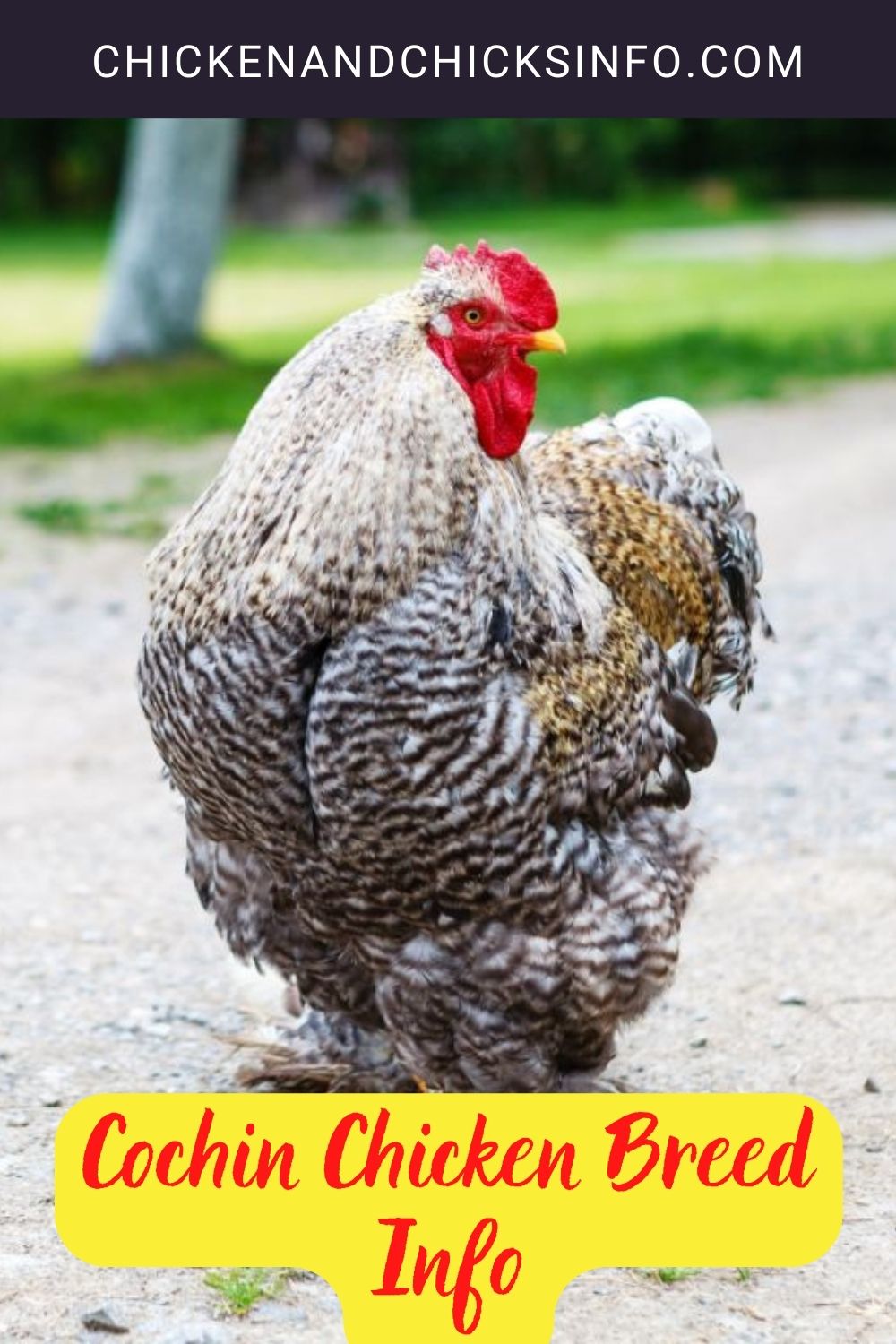If you’re looking for a broody hen to raise chicks for you, Cochin is your best choice. These maternal powerhouses are one of the broodiest breeds of chicken.
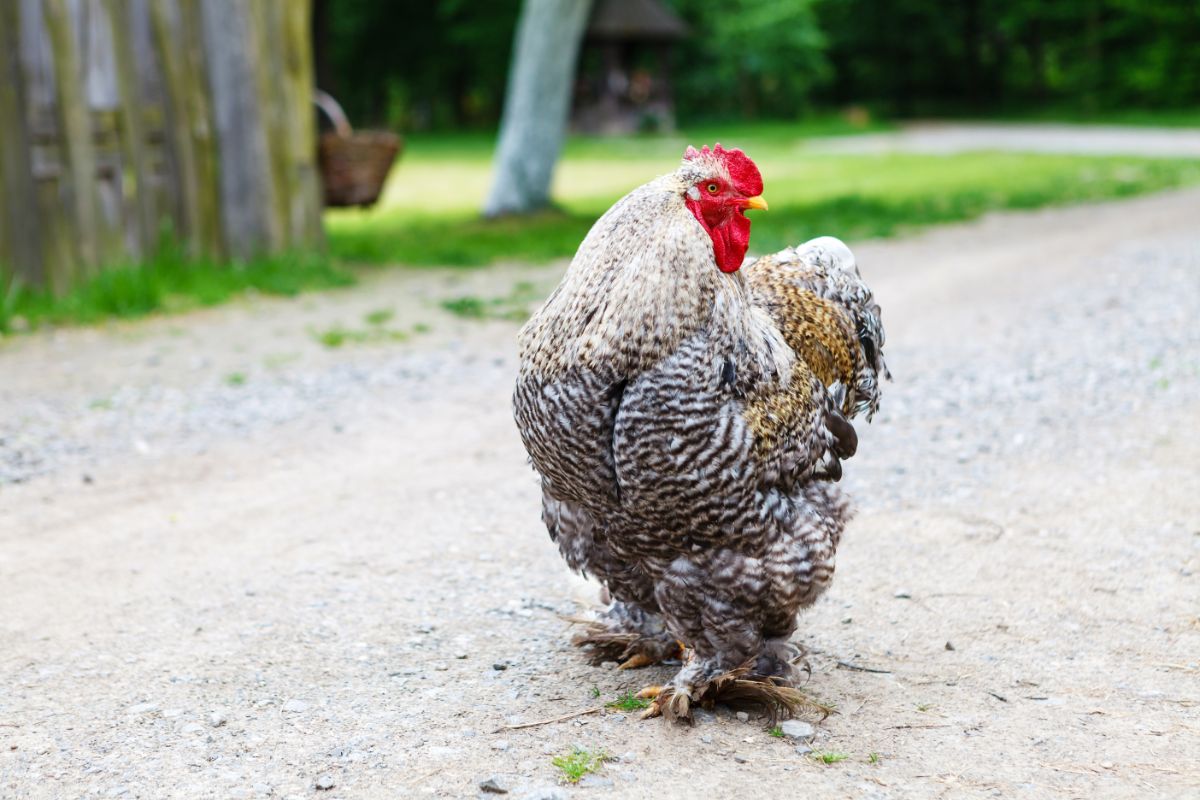
Hens (and sometimes even roosters!) will sit on more than one clutch of eggs per year if allowed. They are an excellent choice for hatching duck or turkey eggs, but due to their large size, they may break smaller, thin-shelled chicken eggs.
When not sitting on eggs, they will lay about 150-200 medium to large brown eggs each year. They are slow to develop, though, so don’t expect any eggs until they’re at least eight months old.
Although they are technically a dual-purpose breed that can be used for eggs and meat, Cochins do not excel as meat birds. Their meat tends to be largely dark meat, so they are mainly used for egg production and show.
Jump to:
How to Buy Online Cochin Chickens

Barred Cochin Bantams As low as: $4.60 - Read reviews
Splash Cochin Bantams As low as: $4.60 - Read reviews
Golden Laced Cochin Bantams As low as: $4.80 - Read reviews
White Cochin Bantams As low as: $4.80 - Read reviews
Partridge Cochin Bantams As low as: $4.60 - Read reviews
Blue Cochin Bantams As low as: $4.60 - Read reviews
Black Cochin Bantams As low as: $4.60 - Read reviews
Barred Cochin Standard Chicks As low as: $4.95 - Read reviews
Buff Cochin Bantams As low as: $4.60 - Read reviews
Partridge Cochin Standard Chicks As low as: $4.95 - Read reviews
Splash Cochin Standard Chicks As low as: $4.95 - Read reviews
Black Cochin Standard Chicks As low as: $4.95 - Read reviews
Silver Pencil Cochin Bantams As low as: $4.60 - Read reviews (3 customer reviews)
White Cochin Standard Chicks As low as: $4.95 - Read reviews
Birchen Cochin Bantams As low as: $4.60 - Read reviews
Silver Laced Cochin Standard Chicks As low as: $4.95 - Read reviews
Golden Laced Cochin Standard Chicks As low as: $4.95 - Read reviews
Buff Cochin Standard Chicks As low as: $4.95 - Read reviews
Blue Cochin Standard Chicks As low as: $4.95 - Read reviews
Red Cochin Bantams As low as: $4.60 - Read reviews
Golden Laced Cochin Bantam Hatching Eggs As low as: $3.84 - Read reviews
Cochin Chicken Breed Quick Info
Cochin Chicken Description
| Cochin Type/Size: | Standard |
| Feather Color: | Varies |
| Leg Type: | Feathered |
| Leg Color: | Yellow |
| Skin Color: | Yellow |
| Cochin Ease of Raising/Keeping: | Easy |
| Cochin Special Care Needs: | Yes |
| Is the Cochin breed a common, rare, or protected breed of chicken? | Rare, “recovering” status |
Cochin Use
| Meat | Yes |
| Eggs | Yes |
| Dual Purpose | Yes |
| Cochin Temperament: | Friendly, docile, calm |
| Cochin Ability/Likelihood to Free Range: | Yes |
Cochin Egg Production
| Egg Color | Brown |
| Egg Size | Large |
| Estimated Number of Eggs Per Year | 150-200 |
| Likeliness to Brood Eggs/Raise Chicks | High |
Cochin Meat Production
| Dressed Weight Male | 9 lbs. |
| Dressed Weight Female | 7 lbs. |
Cochin Climate Tolerance
| Heat | Moderate |
| Cold | Excellent |
Cochin Age to Maturity
| Number of Months to Reach Full Size | 8 Months |
| Number of Months to Start Egg Laying | 8 Months |
| Number of Weeks/Months to Reach Meat Harvest Size | 12 Weeks |
Cochin Size at Maturity
| Male | 11 lbs. |
| Female | 8.5 lbs. |
Origins of the Cochin Chicken
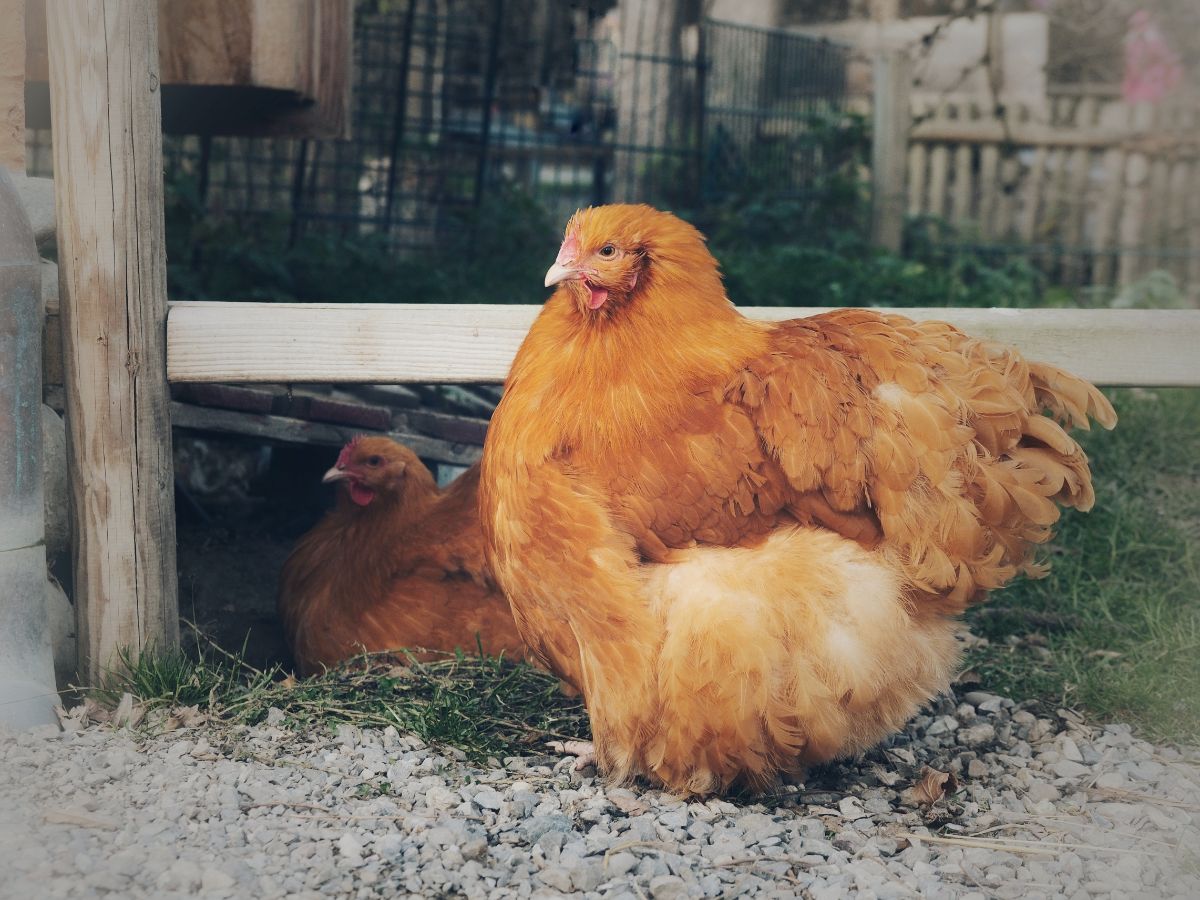
The Cochin chicken breed was developed north of Shanghai, China, in the Province of Shantung. There, they were called “Ju-chin,” meaning “nine picules” (one picule is equal to 1 ¼ pounds).
True to their name, these early Cochins were large and tall with moderate to scant feathering. They could be found in a multitude of different colors.
Importation records show them arriving in the United States as early as 1846, but they likely were brought to the country at least a half-century before.
Queen Victoria of England received Cochin chickens as a present and adored them. This started what was known as the “hen fever” throughout England and America in the mid-nineteenth century.
Some Things to Know About the Cochin Chicken
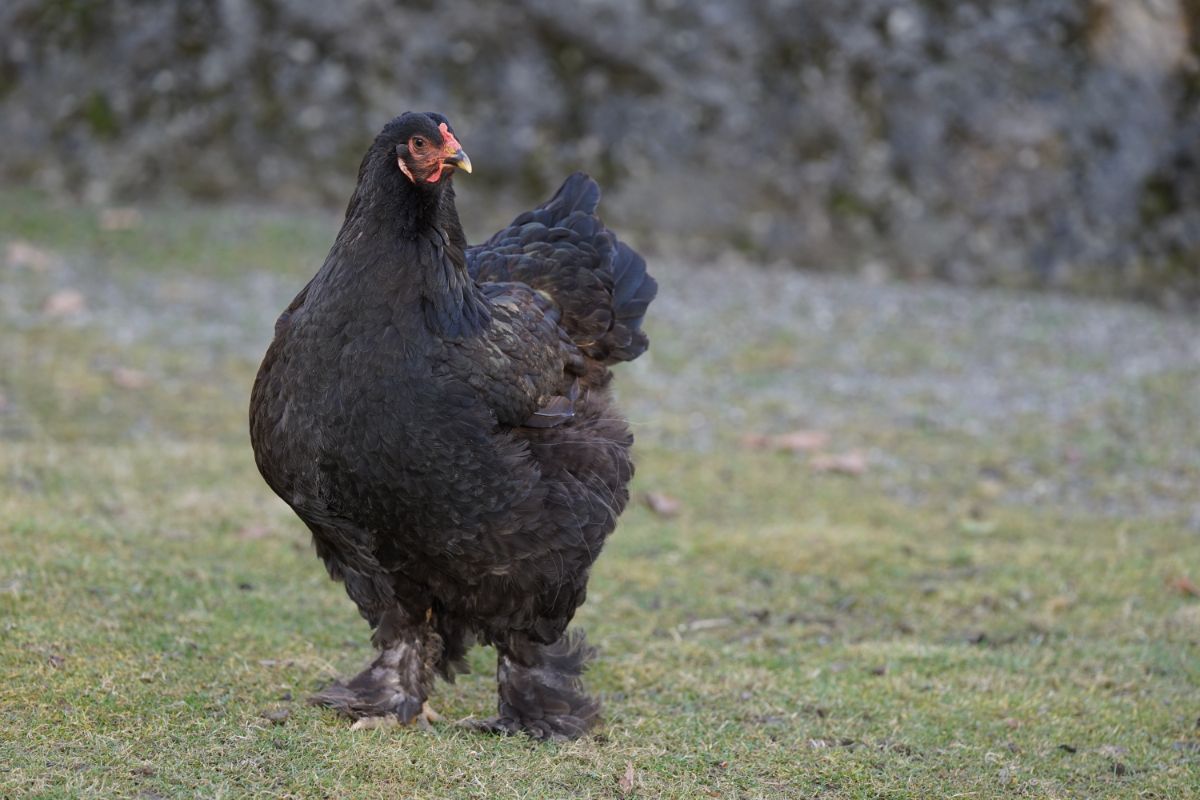
The Cochin is a large chicken breed. Their fluffy plumage adds to their size, making them appear bigger than they actually are.
They have a heart-shaped body when viewed from the side, with full, soft feathering that grows in slowly as they mature. Their beautiful plumage covers their legs and feet, with only their inner two toes being left bare.
Fun fact: They actually hatch with feathering on their feet!
The American Poultry Association recognizes multiple colors of Cochins: buff, brown, blue, barred, white, silver laced, golden laced, partridge, and black.
These birds feature a small to medium-sized, rounded single comb. Hens have similarly small, rounded wattles, while roosters boast long wattles.
How Easy is it to Keep Cochin Chickens?
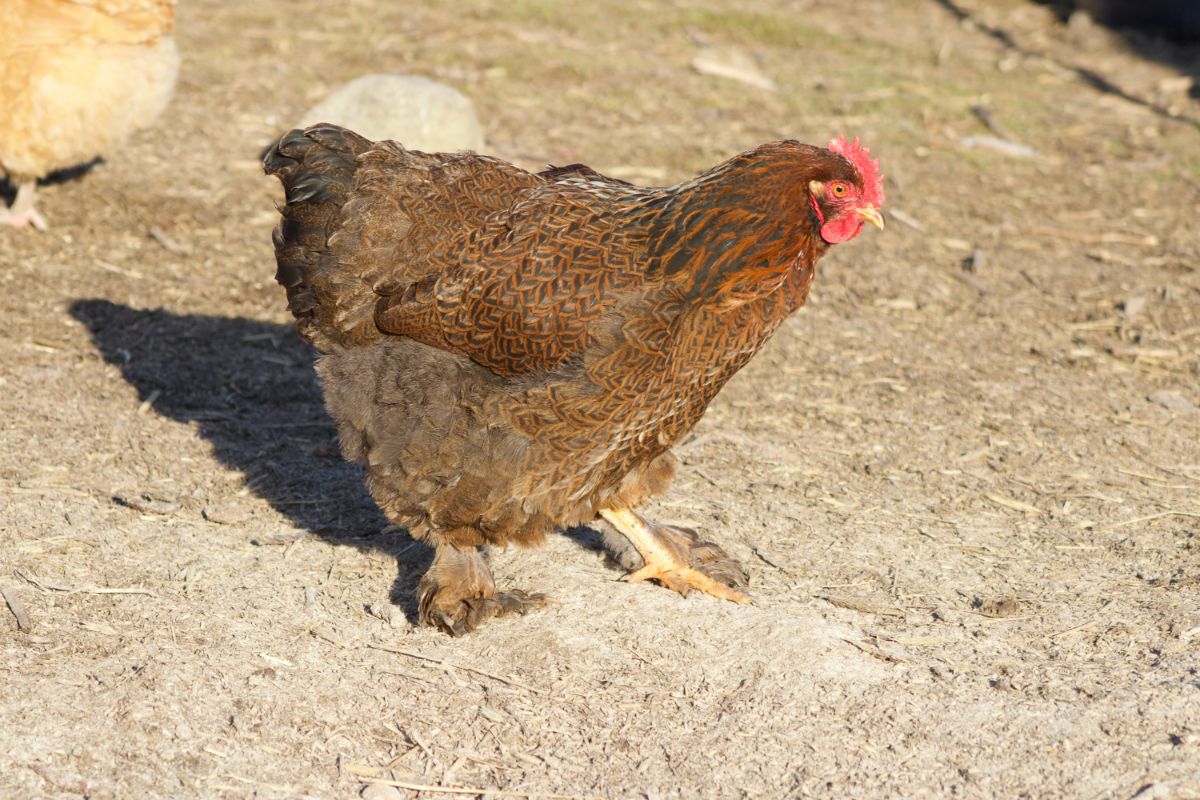
The Cochin chicken breed is a wonderful choice for beginner chicken owners. They are considered one of the gentlest breeds in the world. Even roosters are rarely aggressive.
They make great pet chickens, as they are friendly, easily tamed, and enjoy being around people.
They are also excellent free-range chickens for those with a small backyard. They don’t wander far, forage well, and do not scratch as much as other breeds. A simple two-foot fence will suffice to keep them contained.
They also do well in confinement. Cochins are said to make themselves comfortable wherever they are, even in adverse conditions.
Despite their slow feathering, the Cochin chicken is still a very hardy bird. They are similar to the Brahma when it comes to their ability to thrive in climates where other breeds would fail.
Their feathered legs make them able to withstand the cold, but in hot climates, they do best with plenty of access to shade to keep them cool.
Because of their size, Cochins do not fly and require low roosts. It is also important to make sure that their pens don’t get muddy in the winter, as their feathered feet can easily become muddy and frostbitten.
Special Care and Considerations for Cochin Chickens
As with all chickens with a single comb, there is a risk of frostbite in the winter. When temperatures drop, a swipe of vaseline on their comb can help to protect it from frostbite.
Due to their large size, Cochins are more likely than other breeds to become overweight. This can stop their egg production and even cause death from liver disease. Be sure to monitor your Cochins’ feed intake and decrease their daily ration if they start to become overweight.
Due to their gentle, friendly nature, the best flock mates for Cochins are other breeds that are non-aggressive.
